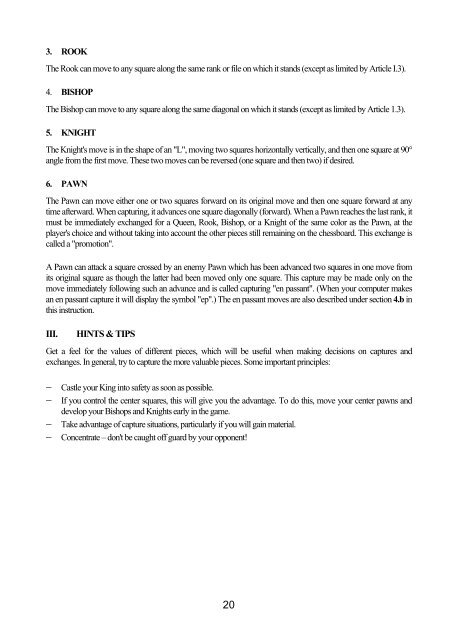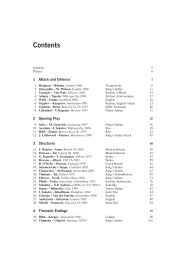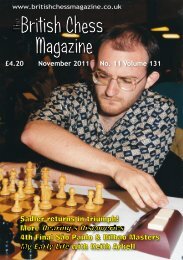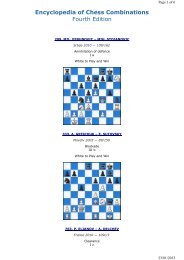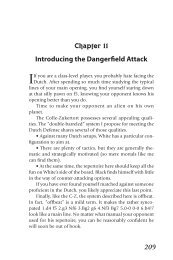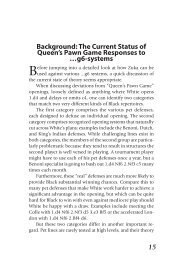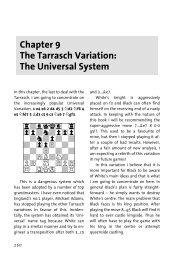View/download user manual - Chess Direct Ltd
View/download user manual - Chess Direct Ltd
View/download user manual - Chess Direct Ltd
Create successful ePaper yourself
Turn your PDF publications into a flip-book with our unique Google optimized e-Paper software.
3. ROOK<br />
The Rook can move to any square along the same rank or file on which it stands (except as limited by Article I.3).<br />
4. BISHOP<br />
The Bishop can move to any square along the same diagonal on which it stands (except as limited by Article 1.3).<br />
5. KNIGHT<br />
The Knight's move is in the shape of an "L", moving two squares horizontally vertically, and then one square at 90°<br />
angle from the first move. These two moves can be reversed (one square and then two) if desired.<br />
6. PAWN<br />
The Pawn can move either one or two squares forward on its original move and then one square forward at any<br />
time afterward. When capturing, it advances one square diagonally (forward). When a Pawn reaches the last rank, it<br />
must be immediately exchanged for a Queen, Rook, Bishop, or a Knight of the same color as the Pawn, at the<br />
player's choice and without taking into account the other pieces still remaining on the chessboard. This exchange is<br />
called a "promotion".<br />
A Pawn can attack a square crossed by an enemy Pawn which has been advanced two squares in one move from<br />
its original square as though the latter had been moved only one square. This capture may be made only on the<br />
move immediately following such an advance and is called capturing "en passant". (When your computer makes<br />
an en passant capture it will display the symbol "ep".) The en passant moves are also described under section 4.b in<br />
this instruction.<br />
III.<br />
HINTS & TIPS<br />
Get a feel for the values of different pieces, which will be useful when making decisions on captures and<br />
exchanges. In general, try to capture the more valuable pieces. Some important principles:<br />
− Castle your King into safety as soon as possible.<br />
− If you control the center squares, this will give you the advantage. To do this, move your center pawns and<br />
develop your Bishops and Knights early in the game.<br />
− Take advantage of capture situations, particularly if you will gain material.<br />
− Concentrate – don't be caught off guard by your opponent!<br />
20


